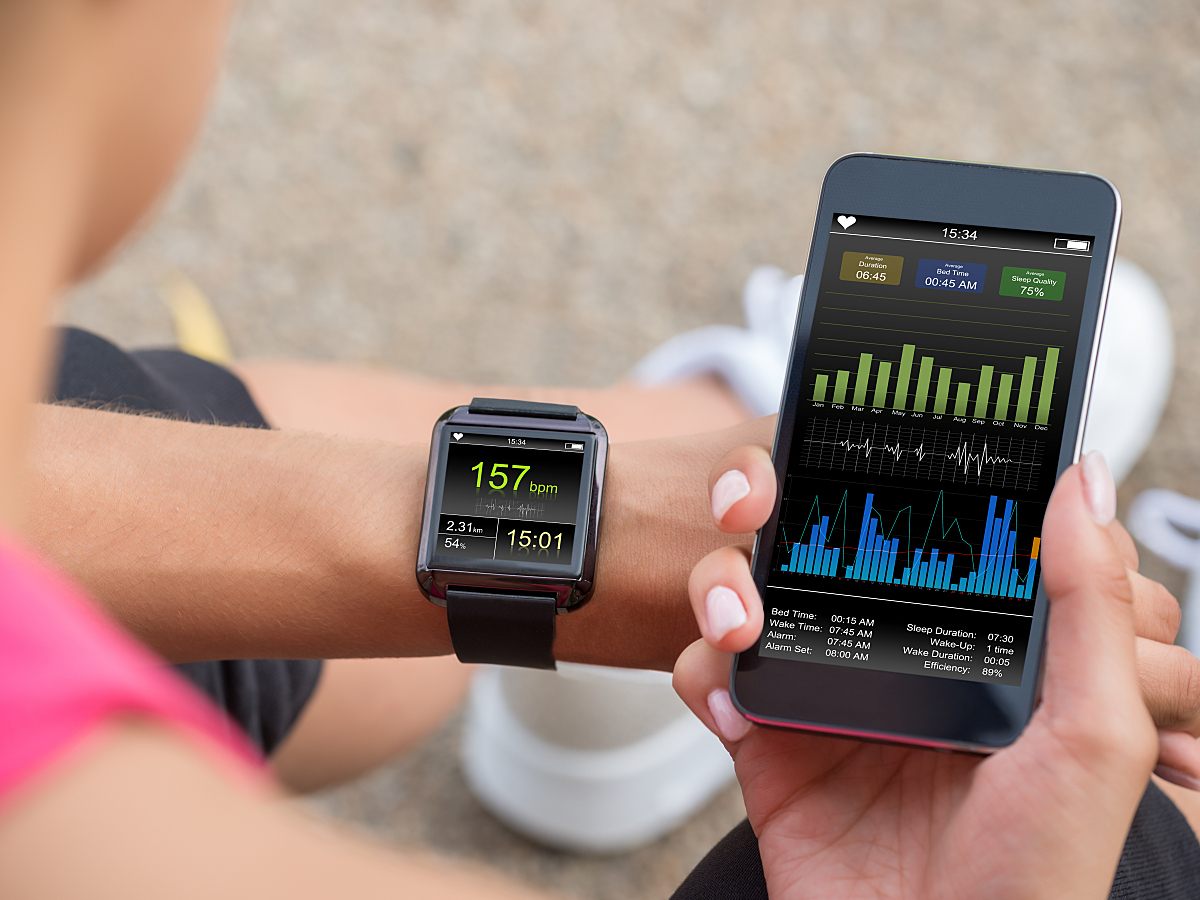The exercise stress test is a key tool in evaluating patients with suspected coronary disease—as the 2021 U.S. chest pain guidelines highlight—and in other situations, such as monitoring for drug side effects.2
Cardiologists are particularly interested in assessing ST changes on ECG and exercise duration, but other factors related to how a patient's autonomic nervous system (ANS) is functioning can be important too. How the heart rate recovers after exercise, for instance, is an indicator of cardiac autonomic function that is a strong predictor of survival and cardiovascular outcomes.3
Therefore, how to improve heart rate recovery (HRR) and potentially boost survival continues to be an area of great interest to cardiologists.
Measuring Heart Rate Recovery
What happens to heart rate (HR) during exercise is thought to be the result of a combination of parasympathetic withdrawal and sympathetic activation, as a review in Frontiers in Physiology describes.4 The fall in HR immediately after exercise is essentially a reversal of those changes, with reactivation of the parasympathetic nervous system occurring. After exercise, sympathetic withdrawal contributes primarily to early HRR, whereas parasympathetic reactivation predominates in later stages, increasing HRR.
HRR is defined as the rate of decline in HR over a prespecified period of time after stopping exercise. The most common HRR calculation involves measuring the HR one minute after activity ceases and subtracting that number in beats per minute from the peak exercise HR. Investigators have also looked at HRR over post-exercise durations ranging from ten seconds to two minutes.
Unlike heart rate variability, no high-tech devices are needed to make this simple but highly reproducible measurement. HRR is typically obtained from an ECG taken during a standardized exercise stress test, but it can also be calculated using pulse palpation.
Additionally, continuing advancements in consumer wearable devices equipped with photoplethysmography technology, such as fitness bands and smartwatches, provide another avenue for determining HRR. "It may be possible to obtain similar measurements using smart wearables in everyday activities, such as stair climbing, or after intense exercise," the authors note in the Proceedings of the IEEE.5 However, wearable devices used for this purpose have to be designed to account for "noise" stemming from certain patient characteristics, such as skin tone and obesity; physiology; and external influences, including ambient light and pressure applied to the skin, according to a review in Biosensors.6
Predicting Mortality and Other Outcomes With HRR
Once HRR is calculated, it can be used to get an idea of how a patient might fare in the future. The seminal study on HRR was published in 1999 in the New England Journal of Medicine.1 Of 2,468 adults without a history of heart failure or coronary revascularization, and without pacemakers, who were referred to the Cleveland Clinic for nuclear stress testing, 26% had abnormal HRR (defined as ≤12 beats per minute) during the first minute after exercise. After accounting for potential confounders, this group had double the risk of dying over six years of follow-up compared to their peers with better recovery.
This relationship between HRR and mortality has been replicated by that same group of researchers and others many times since then. While one-minute HRR is the most widely studied parameter, other studies have found prognostic value in post-exercise HRR durations ranging from ten seconds to two minutes.
A British study published in the Journal of the American Heart Association (JAHA), which included 40,727 individuals free of cardiovascular disease, found that HRR at ten seconds was superior to HRR measured at increasing intervals after exercise in predicting all-cause mortality at a median follow-up of nearly six years. HRR at ten seconds was also the only HRR measure predictive of deaths related to coronary disease.7
Numerous other studies support the prognostic value of measuring HRR. Poor recovery of heart rate following exercise has been associated, for example, with CV events and all-cause mortality in individuals with obesity, sudden cardiac death in the general population, arrhythmia recurrence and mortality following catheter ablation for Afib, and all-cause mortality when combined with a reduced BP response and low exercise capacity.8,9,10,11
A meta-analysis in JAHA brought together nine prospective cohort studies assessing the link between HRR calculated over one or two minutes after exercise and adverse clinical outcomes, showing that an attenuated HRR was associated with a 1.69-fold greater risk of CV events and a 1.68-fold greater risk of all-cause mortality in the general population.2 These relationships were independent of traditional metabolic factors for cardiovascular disease.
To learn more about the power of the ECG in today's clinical landscape, browse our Diagnostic ECG Clinical Insights Center.
The Potential for Altering Heart Rate Recovery
Several studies have focused on how to improve heart rate recovery and potentially modify clinical outcomes, and these studies have suggested that exercise training during cardiac rehabilitation and outside of such programs can be beneficial.
A study in the Egyptian Heart Journal showed that cardiac rehabilitation programs lasting six or twelve weeks improved HRR in patients who had recovered from an anterior-wall STEMI.12 In another study in the International Journal of Environmental Research and Public Health, exercise-based cardiac rehab improved two-minute HRR and other factors predictive of mortality in patients with coronary disease.13
There's evidence supporting exercise training in patients free from cardiovascular disease as well. A study in the European Journal of Applied Physiology, for instance, demonstrated that supervised aerobic exercise led to better one-minute HRR in sedentary adults with overweight or obesity. Greater gains were observed in those who lost more weight during the intervention.14
Beyond exercise training, other steps can be taken by those looking to improve HRR. Studies suggest that recovery can be enhanced by postexercise cooling, chronic vagus nerve stimulation, and sacubitril/valsartan.15,16,17
Whether these gains in HRR translate to better clinical outcomes over the long term remains to be seen.
A Simple, Powerful, and Intuitive Measure of Autonomic Tone
HRR, unlike heart rate variability, is a simple parameter that is easy to understand and measure. It yields information on vagal/parasympathetic tone and has been proven to be a powerful and independent predictor of overall mortality.
Patients who have been sedentary and are deconditioned or overweight can consider an abnormal HRR a wake-up call to modify their lifestyle and thereby improve their mortality, as preliminary evidence suggests that increasing HRR with exercise training may lower mortality substantially.
For healthy, asymptomatic individuals, HRR can serve as a marker for overall cardiovascular fitness. It can be monitored along with exercise capacity, peak heart rate, and resting heart rate to raise awareness of how exercise is influencing overall ANS balance.
References:
1. Cole CR, Blackstone EH, Pashkow FJ, et al. Heart-rate recovery immediately after exercise as a predictor of mortality. New England Journal of Medicine. October 1999; 341: 1351-1357. https://www.nejm.org/doi/full/10.1056/NEJM199910283411804
2. Gulati M, Levy PD, Mukherjee D, et al. 2021 AHA/ACC/ASE/CHEST/SAEM/SCCT/SCMR guideline for the evaluation and diagnosis of chest pain: a report of the American College of Cardiology/American Heart Association joint committee on clinical practice guidelines. Journal of the American College of Cardiology. November 2021; 78(22): e187-e285. https://www.jacc.org/doi/10.1016/j.jacc.2021.07.053
3. Qiu S, Cai X, Sun Z, et al. Heart rate recovery and risk of cardiovascular events and all-cause mortality: a meta-analysis of prospective cohort studies. Journal of the American Heart Association. May 2017; 6: e005505. https://www.ahajournals.org/doi/full/10.1161/JAHA.117.005505
4. Michael S, Graham KS, Davis GM. Cardiac autonomic responses during exercise and post-exercise recovery using heart rate variability and systolic time intervals—a review. Frontiers in Physiology. May 2017; 8: 301. https://www.frontiersin.org/articles/10.3389/fphys.2017.00301/full
5. Charlton PH, Kyriacou PA, Mant J, et al. Wearable photoplethysmography for cardiovascular monitoring. Proceedings of the IEEE. March 2022; 110(3): 355-381. https://ieeexplore.ieee.org/document/9733047
6. Fine J, Branan KL, Rodriguez AJ, et al. Sources of inaccuracy in photoplethysmography for continuous cardiovascular monitoring. Biosensors. April 2021; 11(4): 126. https://www.mdpi.com/2079-6374/11/4/126/htm
7. Van de Vegte YJ, van der Harst P, Verweij N. Heart rate recovery 10 seconds after cessation of exercise predicts death. Journal of the American Heart Association. April 2018; 7(8): e008341. https://www.ahajournals.org/doi/full/10.1161/JAHA.117.008341
8. Zannoni J, Bandera F, Guazzi M. An impaired exercise heart rate recovery typically characterize overweight subjects: findings from EURO-EX prevention trial. Journal of the American College of Cardiology. May 2021; 77(18_Supplement_1): 1538. https://www.jacc.org/doi/10.1016/S0735-1097%2821%2902896-5
9. Kurl S, Jae SY, Voutilainen A, et al. Exercise heart rate reserve and recovery as risk factors for sudden cardiac death. Progress in Cardiovascular Diseases. September/October 2021; 68: 7-11. https://www.sciencedirect.com/science/article/abs/pii/S0033062021000980
10. Donnellan E, Wazni OM, Chung MK, et al. Attenuated heart rate recovery is associated with higher arrhythmia recurrence and mortality following atrial fibrillation ablation. EP Europace. July 2021; 23(7): 1063-1071. https://academic.oup.com/europace/article/23/7/1063/6104376
11. Sipilä K, Tikkakoski A, Alanko S, et al. Combination of low blood pressure response, low exercise capacity and slow heart rate recovery during an exercise test significantly increases mortality risk. Annals of Medicine. November/December 2019; 51(7-8): 390-396. https://www.tandfonline.com/doi/full/10.1080/07853890.2019.1684550
12. El Missiri A, Amin SA, Tawfik IR, Shabana AM. Effect of a 6-week and 12-week cardiac rehabilitation program on heart rate recovery. Egyptian Heart Journal. October 2020; 72(1): 69. https://www.ncbi.nlm.nih.gov/pmc/articles/PMC7560662/
13. Manresa-Rocamora A, Sarabia JM, Guillen-Garcia S, et al. Heart rate variability-guided training for improving mortality predictors in patients with coronary artery disease. International Journal of Environmental Research and Public Health. August 2022; 19(17): 10463. https://www.mdpi.com/1660-4601/19/17/10463/htm
14. Höchsmann C, Dorling JL, Apolzan JW, et al. Effect of different doses of supervised aerobic exercise on heart rate recovery in inactive adults who are overweight or obese: results from E-MECHANIC. European Journal of Applied Physiology. July 2019; 119: 2095-2103. https://link.springer.com/article/10.1007/s00421-019-04198-3
15. Peçanha T, Low D, de Brito LC, et al. Effects of postexercise cooling on heart rate recovery in normotensive and hypertensive men. Clinical Physiology and Functional Imaging. November 2019; 40(2): 114-121. https://onlinelibrary.wiley.com/doi/10.1111/cpf.12612
16. Nearing BD, Libbus I, Carlson GM, et al. Chronic vagus nerve stimulation is associated with multi-year improvement in intrinsic heart rate recovery and left ventricular ejection fraction in ANTHEM-HF. Clinical Autonomic Research. February 2021; 31: 453-462. https://link.springer.com/article/10.1007/s10286-021-00780-y
17. Giallauria F, Vitale G, Pacileo M, et al. Sacubitril/valsartan improves autonomic function and cardiopulmonary parameters in patients with heart failure with reduced ejection fraction. Journal of Clinical Medicine. June 2020; 9(6): 1897. https://www.mdpi.com/2077-0383/9/6/1897


